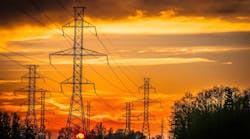Despite their rightful status as a game-changer and up-and-coming technical breakthrough area for electric utilities generally, in the 2030s or 40s, we may look back and see electric vehicles were also a necessity for the health or survival of electric utilities in the 2020's.
The sooner that each utility gets the EV charging and dynamic pricing and grid-edge energy storage aspects "right," the sooner enormous environmental and economic benefits will come to the forefront, both for utility customers and for the most EV-savvy utilities themselves.
Much has already been made about the energy storage-related benefits of electric vehicles, and about the untapped value of under-utilized off-peak generating capacity for charging EVs overnight. But it is also of value to look at the EV charging-related electricity sales as a source of much-needed "payback" revenue, for the tremendous loss of revenue associated with the last few decades' worth of energy efficiency success our industry spearheaded.
Granted, in early phases at least, state commissions provided rebates to utilities for portions of the participating customer base who joined utility-run programs for rebates more efficient appliances or for better insulation of homes, but after initial phases for these programs and for home insulation programs, utility rebates did not play a major role. People simply bought more efficient appliances and better-insulated homes without a rebate.
All these decades later now, it is largely due to the electric utility industry's success in promoting energy efficiency programs that the transportation sector now has a larger carbon footprint than the electric utility sector. A key area of improvement has been in the efficiency of refrigerators.
The trend toward moving from traditional, revenue and asset-centric rate-making models, to performance-based rates, continues, as exemplified by this week's story regarding plans for such a move in Hawaii.
And the trend toward state commissions promoting electric vehicles continues, as exemplified by the news this week regarding AEP Ohio's plan having received commission approval.
But in the meantime, an increase in revenue for electric utilities is most likely to come from EVs and related smart grid initiatives, since population and GDP growth are too low, in and of themselves, to be the main drivers for utilities to enjoy healthy revenue and sales growth.
As highlighted in a recent Energy Efficiency report, even though the GDP has grown 30% since 2000, average energy usage has stayed at the same level as the year 2000. And overall, in the last few decades, the efficiency improvements have reduced the average American's utility bill $500 per year, which represents more than 1/3 of a typical $1,400 per year electric bill. It is a great success story but also a story of lost revenue for utilities in those states which have not switched over to performance-based rate making models.
The flip side (also noted in the same Energy Efficiency report) is the fact that on average, residents of the five least energy-efficient states have seen their electric bills increase two times as much as those in the five states that have led in energy efficiency. If the leading five states are not enjoying significant load growth and/or customer growth, one would hope their regulatory models have been compensating for any loss in revenue associated with their energy efficiency leadership.


